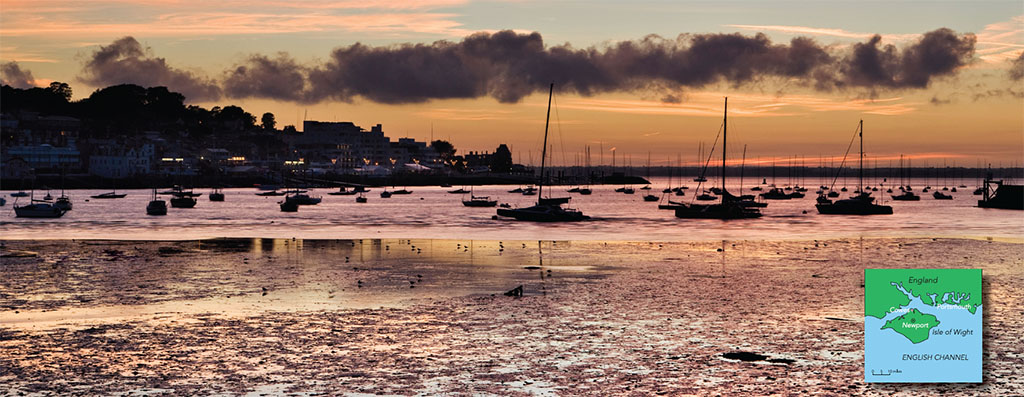
Hoist the pennants and toast the Queen
There’s a very old British joke that goes like this. Why did Queen Victoria never ride a horse? Answer: Because she preferred cows to ride. That doesn’t make sense, of course, unless you know that the Queen was a big fan of the Isle of Wight, a small and beautiful island off the south coast of Hampshire, where there are two towns called Cowes and Ryde.
[caption id="RacingAroundtheIsleofWightatCowes_Feature" align="aligncenter" width="576"]
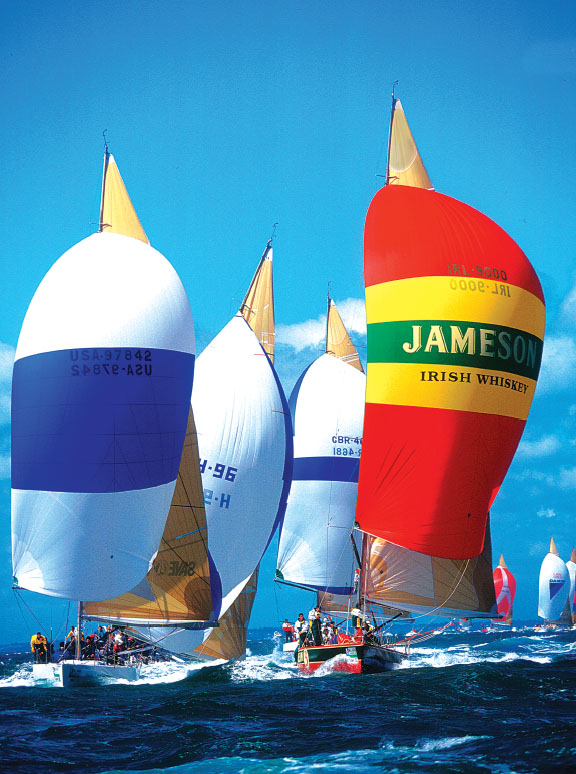
ANDREW WOODLEY/ALAMY
It’s true. Queen Victoria really did prefer Cowes to Ryde—or just about any other place on the island. It was here that she built her summer home, and it was here that she died in 1901.
Today, Cowes is famous as the yachting capital of Britain, and for an annual event that each August sees a huge influx of visitors flocking to watch and take part in—the largest sailing regatta of its kind in the world.
The regatta happens during Cowes Week, and it has played a key role in the British sporting calendar for nearly 200 years. It’s one of the UK’s longest running, most successful sporting events. It began in 1826, 11 years before Victoria came to the throne, when the Royal Yacht Squadron, based in Cowes, organized a three-day regatta. The following year King George IV brought royal patronage by presenting a cup to mark the occasion. As the years passed, the event grew haphazardly, with each day’s racing organized by a different local club, with its own program and rules. In 1964, the Duke of Edinburgh, himself a regular competitor and, by then, Admiral of the Royal Yacht Squadron, suggested pulling all the clubs together with a central body to run a more unified event. That’s the way it is today.
[caption id="RacingAroundtheIsleofWightatCowes_img1" align="aligncenter" width="362"]
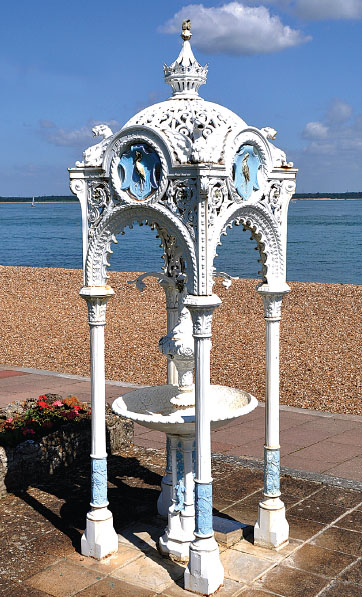
JOHN WADE
Cowes sits at the northern tip of the Isle of Wight, separated from southern England by a narrow stretch of water called The Solent, where the yachting action principally takes place. The event attracts around 8,500 competitors, who take part in more than 40 races every day in up to 1,000 boats. They range from Olympic and world-class professionals to amateur weekend sailors. For the thousands of spectators, the sailing is easily viewed from prime spots along the shore, where marquees are erected serving food and drink, with live music and parties. On the last night, the celebrations are topped off by a magnificent firework display.
[caption id="RacingAroundtheIsleofWightatCowes_img2" align="aligncenter" width="416"]

JOHN WADE
It all happens the second week in August. If you want to be there, book early, because the hotels will be full to overflowing. But if you’d prefer to see the quieter side of Cowes, try another time. June is a good month, when the weather is temperate and the island hosts the Festival of the Sea, with art displays, fishing, food-tasting and opportunities to charter boats.
Cowes is split down the middle by the River Medina estuary. The original name was Shamblord but, in the 15th century, its current name was derived from sandbanks either side of the river that resembled—you guessed it—a couple of cows. East Cowes and West Cowes today border the banks of the river, although the word “west” has been dropped and the two halves of town are referred to as Cowes and East Cowes.
[caption id="RacingAroundtheIsleofWightatCowes_img3" align="aligncenter" width="413"]
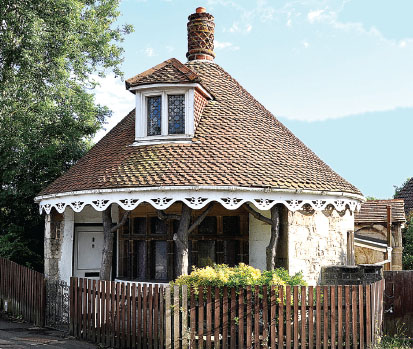
JOHN WADE
It’s a cosmopolitan town where flowers garland the lamp posts and the streets are full of art galleries, fashionable clothing boutiques, curio and craft shops, pubs, coffee shops and restaurants. The microclimate of the Isle of Wight means it is often warmer than the nearby mainland, and palm trees flourish along the coast.
One of the town’s most prominent landmarks is Cowes Castle, built in 1539 as part of Henry VIII’s chain of coastal defences. Today, the castle is home to the Royal Yacht Squadron, from where brass cannons are used to start the yachting races.
[caption id="RacingAroundtheIsleofWightatCowes_img4" align="aligncenter" width="368"]
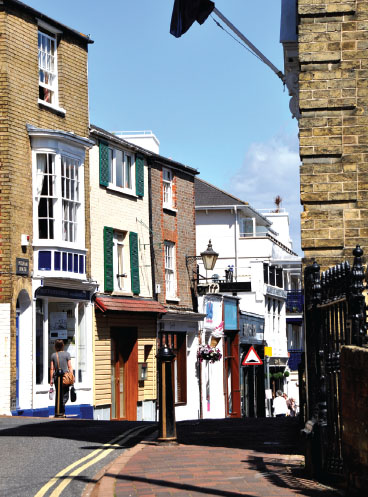
JOHN WADE
When people in Cowes aren’t on the water sailing, they’re on the shore watching it, and there are plenty of places for that. Along the esplanade, ornamental parkland stretches down to miles of lightly-shingled beach with spectacular views across The Solent.
The Isle of Wight in general is a hotbed of history, and Cowes is no exception with a mix that ranges from historical events lost in the mists of time to places you can still see, visit and appreciate today. The names of Victoria and her husband Prince Albert are still seen everywhere, from street names to ice cream parlors, as well as hotels, a church, a fort, a ceremonial drinking fountain and more.
Making the journey from Cowes to East Cowes, you pass through the harbor. It might not be as picturesque as some places, but it’s fascinating in its own right. The enormous building across the river with the gigantic Union Jack painted on the doors is Venture Quays, once home to seaplane manufacturers Saunders Roe. Here in the 1960s the first hovercrafts were built and, half a century later, these amazing craft still carry passengers from nearby Ryde to the mainland.
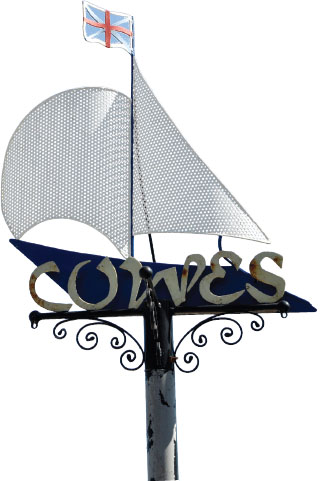
JOHN WADE
Further along the quays, those who enjoy industrial antiques will be fascinated by the Cowes Hammerhead Crane, dating back to 1912, and once used to hoist enormous boilers and other heavy machinery during the days of Cowes’ ship building industry that dates back to before 1700. Enormous and weighing 80 tons, it is the only pre-World War I crane of its type remaining in England.
Linking the two sides of Cowes is a chain ferry, referred to by the locals as the floating bridge. It carries foot passengers and vehicles by hauling itself along two chains that span the river at its narrowest point.
East Cowes boasts an interesting classic boat museum, but its biggest claim to fame is Osborne House, Queen Victoria’s palatial summer residence. Open to the public every day throughout the summer, the estate covers nearly 350 acres. Visitors can spend the best part of a day wandering the stunning grounds and gardens, then go inside the house to view the Queen’s state rooms and family rooms. Hidden in the grounds is a small Swiss Cottage with its own gardens, once tended by Victoria’s nine children. Nearby is the Queen’s own private beach, where she regularly bathed and her children learned to swim.
Osborne House was designed by Prince Albert in the Italian Renaissance style. He said that the views from the House, across the Solent, reminded him of the Bay of Naples. Queen Victoria said of her neighborhood, “It is impossible to imagine a prettier spot.”
What better recommendation do you need to visit Cowes?





Comments